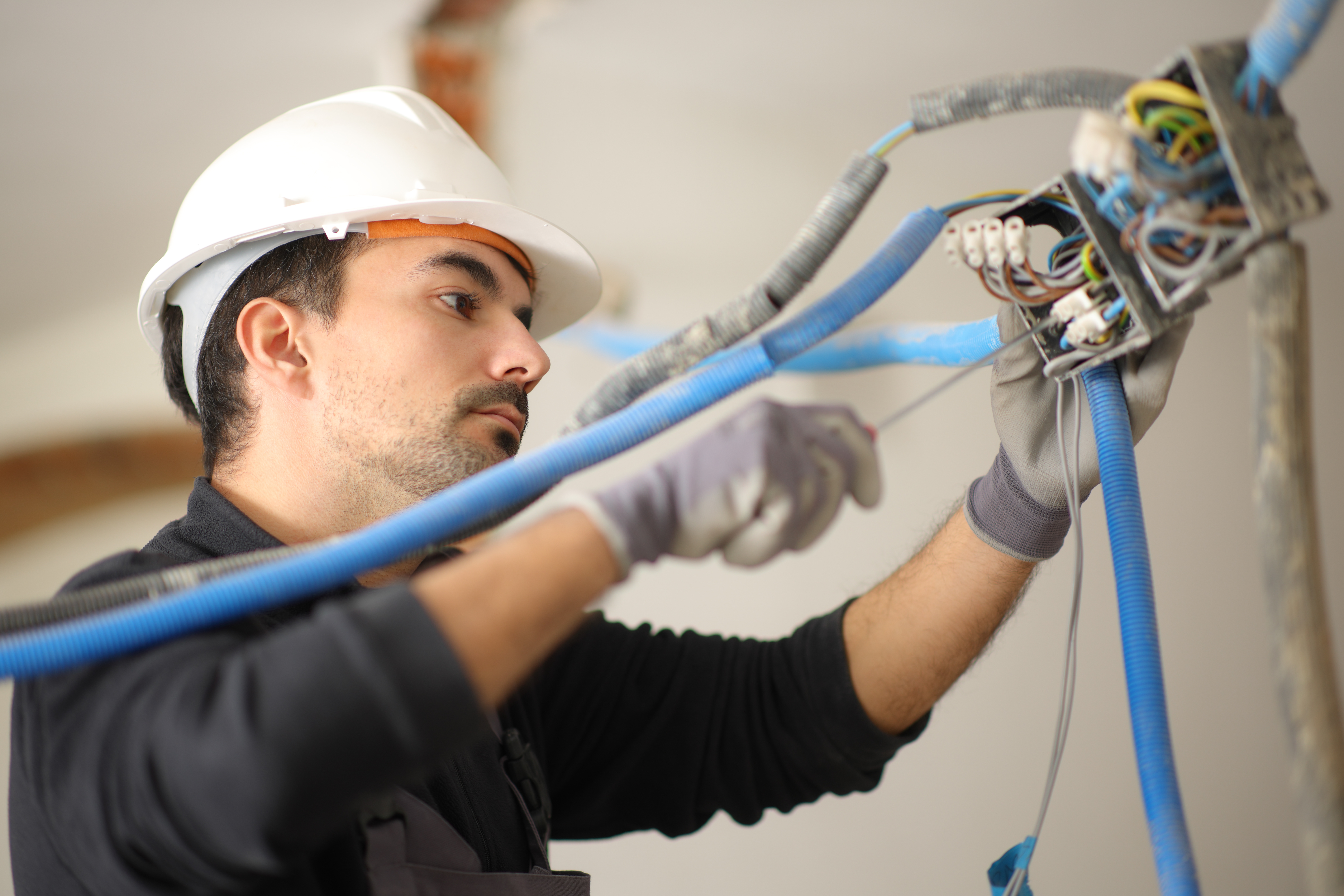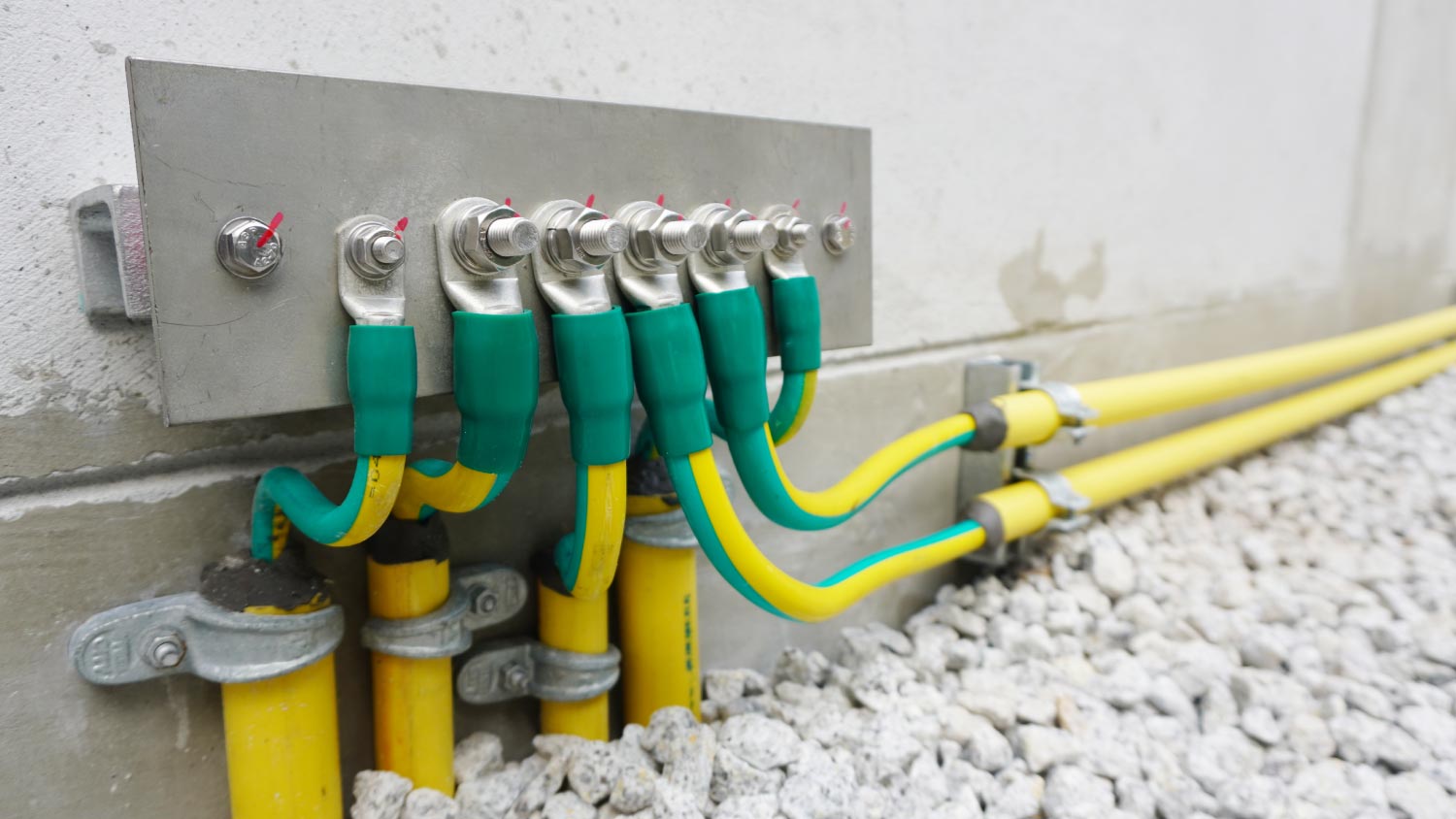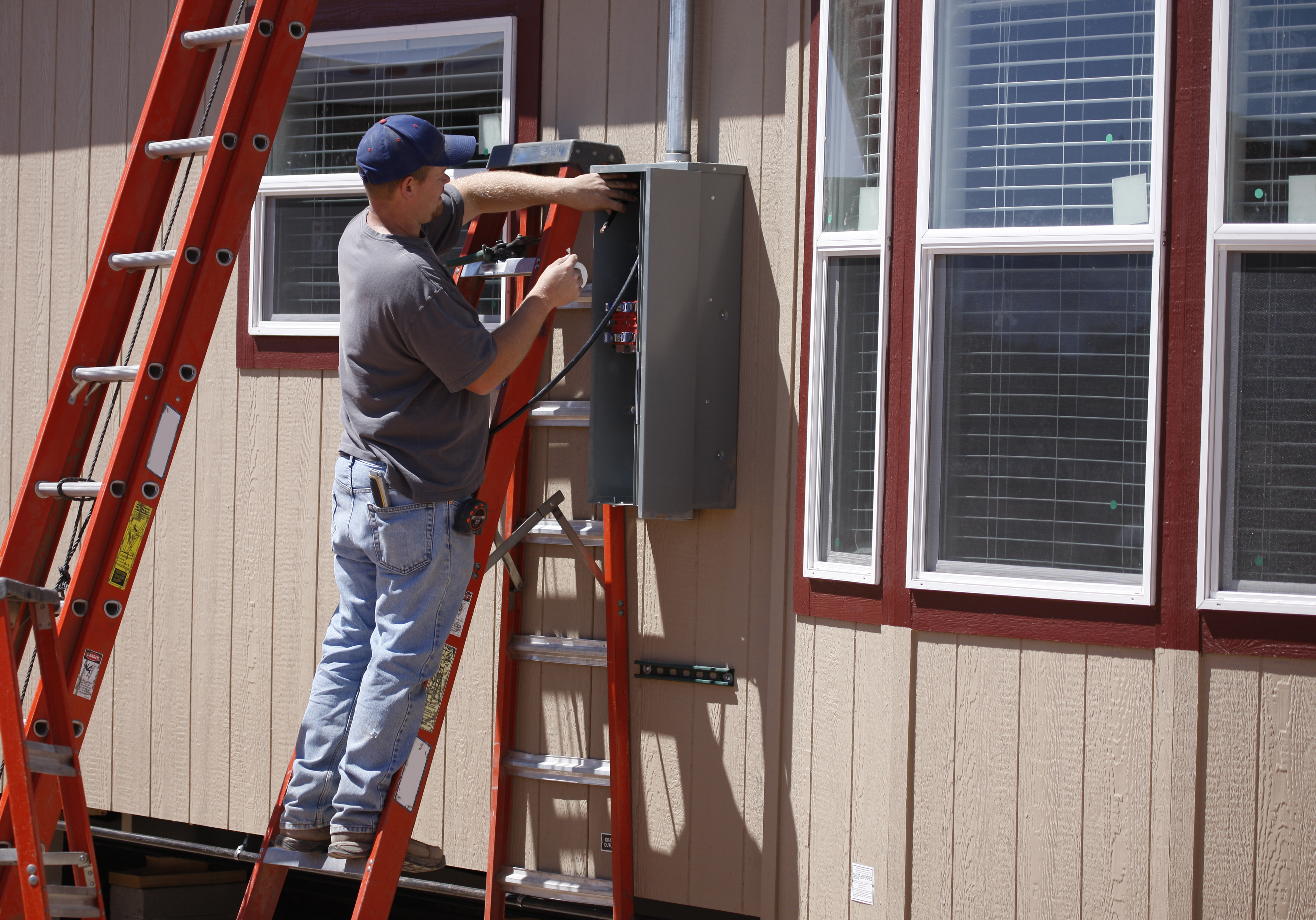
Wondering how much rewiring a house costs in Philadelphia? Learn how local codes, materials, and home age affect your final price.
Ground yourself in knowledge about the ground wire


A ground wire safely channels excess electricity from your home and sends it into the ground.
A three-pronged outlet usually indicates a grounded outlet
The ground wire pairs with the circuit breaker to keep your electrical system operating safely.
A home’s electrical system is a complicated collection of wires and connections. When too much power overloads the system, that excess electricity needs a way to be discharged safely. That’s where the ground wire comes into play. But what does a ground wire do, exactly? Learn all about this important wire and how it plays into your safety as well as the safety of your home.
A ground wire is appropriately named because of its location in the ground beneath your home. That is, it should be there if your home was built in the 1960s or later. In 1962, the National Electrical Code® (NEC) mandated ground wiring as the standard electrical installation for new homes. Per the NEC, “ground” means the Earth.
So, why the ground? Long story short, Earth is an excellent conductor of electricity. It has a negative electrical charge that attracts positive charges. During a power surge, the ground wire channels any extra positive charges from your house directly into the ground, keeping the house safe from an electrical fire and you and your family safe from electrocution.
Ground wires are often green, though some are green with yellow stripes or are bare copper wires without any insulation around them. No matter their appearance, ground wires run from each outlet to a centralized spot, usually near the main circuit box in a home. From here, they connect to a grounding rod that runs directly into the ground. Like the ground wire, the grounding rod is also usually made from copper, an excellent conductor of electricity.
It’s not uncommon for a home to have excess electrical charges, which often happen during a power surge. If you’ve ever noticed that your lighting flickers when you turn on appliances, it’s the extra supply of electricity coming into your circuits that’s causing the boost in power.
There are a number of reasons for excess power to flow into your home.
You’ve overloaded the outlets: If you have too many devices plugged into a single circuit or have extension cords running everywhere, circuits can get overloaded.
Faulty wiring: This might be difficult to determine without an electrician’s expertise, plus the fact that wires are hidden behind your walls. But if you find that your circuit breaker often trips or you hear a buzzing noise near any outlets, it could be a sign that something is amiss in your wiring.
Lightning: During a storm, it’s actually not uncommon for a lightning bolt to strike a power line—or even your house!—resulting in a tremendous boost in voltage.
Restoring power after an outage: It’s normally a good thing for the power to be restored after a grid failure, but not if you don’t have major appliances plugged into grounded outlets or surge protectors.
If excess electricity doesn’t have a path to the ground, that surge of electricity will find another place to go. For example, if you plug a large appliance into an ungrounded outlet, the surge can flow into that appliance and damage it. That’s why it’s so important to use surge protectors to power major appliances.
However, a ruined washing machine or big-screen TV is nothing compared to other potential surge hazards. The excess electricity could make its way through to the actual structure of your home, which can cause an electrical fire. Aside from structural hazards, if you unknowingly touch an affected plug or outlet and receive a strong enough shock, it could result in serious injury or electrocution. This is why most electrical professionals always recommend you invest in the cost of a whole-house surge protector.

There are many different types of electrical outlets; some are grounded, and some aren’t. Take a look at one of your outlets. If you see three slots where you can plug in the cord from an appliance or device, it means it’s grounded. With a three-slot outlet, there are typically two vertical slots at the top and a D-shaped slot at the bottom; this is the one that connects to the ground wire.
However, if your home was built prior to the 1960s, you might see some ungrounded outlets with only two vertical slots. According to the National Electrical Code®, two-prong outlets are safe for homes as long as they’re in proper working order.

You may have noticed that smaller appliances, such as hair dryers, don’t typically have three prongs. This is because they don’t require the level of power that a washer and dryer do, so these smaller appliances can usually be safely used in an ungrounded outlet.
Regardless, it’s safer overall to hire a local electrician and have any ungrounded outlets replaced with grounded three-prong outlets.
Even if all the outlets in your home are grounded, it’s still worth hiring a licensed electrician to inspect and repair any weak connections to the ground wire. It’s often the grounding wire that trips the circuit breaker, another electrical safety measure. Should there be an issue with your electrical system, be it excess electricity or a short circuit, the circuit breaker stops it by breaking the route of electricity. You can then reset (or flip) the circuit breaker to resume the regular flow of power.
There is another option to protect yourself from the dangers of power surges, which is to install a ground-fault circuit interrupter (GFCI) outlet. Not all GFCIs are grounded; however, even an ungrounded GFCI is safer than a standard ungrounded outlet because it can shut down the power if it detects even the smallest abnormality in electricity.
Adding safety measures to your home’s electrical system should not come at the risk of your safety. Before you start to poke around any wiring in your home, cut the power. But even then, it’s best to leave most electrical repairs in the hands of experienced professionals.
From average costs to expert advice, get all the answers you need to get your job done.

Wondering how much rewiring a house costs in Philadelphia? Learn how local codes, materials, and home age affect your final price.

Prepare for the cost to add an electrical outlet in Philadelphia by learning about cost factors and deciding on placement, style, and other features.

How much does electrical box replacement cost in Philadelphia? Learn how much more you can expect to spend paying a pro in this city.

Having dependable electricity is more than just a convenience—it’s a necessity. Here’s when to hire an electrician to keep your home up and running, safely.

Learn how to find wires in your walls so you can avoid danger the next time you need to drill holes in a wall for a DIY project.

Learn how to install a coax outlet to save money and clean up the tangle of wires in your entertainment room or living room.